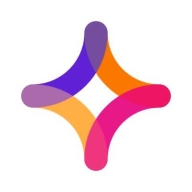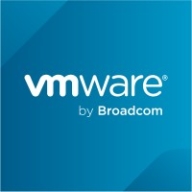

Jitterbit Harmony and Spring Cloud Data Flow are competing in the integration platform market, particularly in data synchronization and orchestration. Spring Cloud Data Flow seems to have the upper hand due to its robust feature set, which may justify its higher cost compared to Jitterbit Harmony's more favorable pricing.
Features: Jitterbit Harmony offers a low-code approach with seamless API integration, flexible data connection options, and real-time integration benefits. Spring Cloud Data Flow provides a powerful microservices-based model, real-time stream processing capabilities, and advanced analytics features.
Room for Improvement: Jitterbit Harmony could enhance its customization capabilities, expand its analytics features, and improve scalability for complex integrations. Spring Cloud Data Flow might benefit from more straightforward deployment, enhanced user interface simplicity, and cost reduction for smaller enterprises.
Ease of Deployment and Customer Service: Jitterbit Harmony supports an easier deployment model with an intuitive setup, aiding quick execution with responsive customer service. Spring Cloud Data Flow, while requiring more technical expertise for deployment, offers substantial support for complex custom solutions, beneficial for technical teams with specific integration needs.
Pricing and ROI: Jitterbit Harmony provides competitive pricing, delivering good ROI for small to medium enterprises seeking cost-effective integration solutions. Its lower initial setup cost is appealing to budget-conscious buyers. Conversely, Spring Cloud Data Flow's higher initial investment can be balanced by its comprehensive feature set, offering great value and ROI for businesses requiring scalable, high-level integration solutions.
| Product | Market Share (%) |
|---|---|
| Spring Cloud Data Flow | 1.2% |
| Jitterbit Harmony | 0.6% |
| Other | 98.2% |


| Company Size | Count |
|---|---|
| Small Business | 8 |
| Midsize Enterprise | 3 |
| Large Enterprise | 1 |
| Company Size | Count |
|---|---|
| Small Business | 3 |
| Midsize Enterprise | 1 |
| Large Enterprise | 5 |
Jitterbit Harmony offers an advanced integration platform that simplifies data transformation, helps users quickly connect apps, and automates workflows, streamlining complex business processes efficiently.
Designed to meet the high demands of modern businesses, Jitterbit Harmony enables seamless integration across cloud and on-premise environments. By leveraging its powerful tools and user-friendly design, users can accelerate innovation, reduce operational costs, and enhance productivity. It bridges the gap between traditional and emerging technologies, ensuring organizations can adapt quickly to market changes and remain competitive.
What are the key features of Jitterbit Harmony?Jitterbit Harmony finds its application across numerous industries, from enhancing data integration in the healthcare sector to optimizing supply chain logistics in manufacturing. It supports financial institutions by improving transaction processing and facilitates real-time data connectivity in retail environments, making it a versatile choice for diverse industries looking to innovate rapidly.
Spring Cloud Data Flow is a toolkit for building data integration and real-time data processing pipelines.
Pipelines consist of Spring Boot apps, built using the Spring Cloud Stream or Spring Cloud Task microservice frameworks. This makes Spring Cloud Data Flow suitable for a range of data processing use cases, from import/export to event streaming and predictive analytics. Use Spring Cloud Data Flow to connect your Enterprise to the Internet of Anything—mobile devices, sensors, wearables, automobiles, and more.
We monitor all Data Integration reviews to prevent fraudulent reviews and keep review quality high. We do not post reviews by company employees or direct competitors. We validate each review for authenticity via cross-reference with LinkedIn, and personal follow-up with the reviewer when necessary.